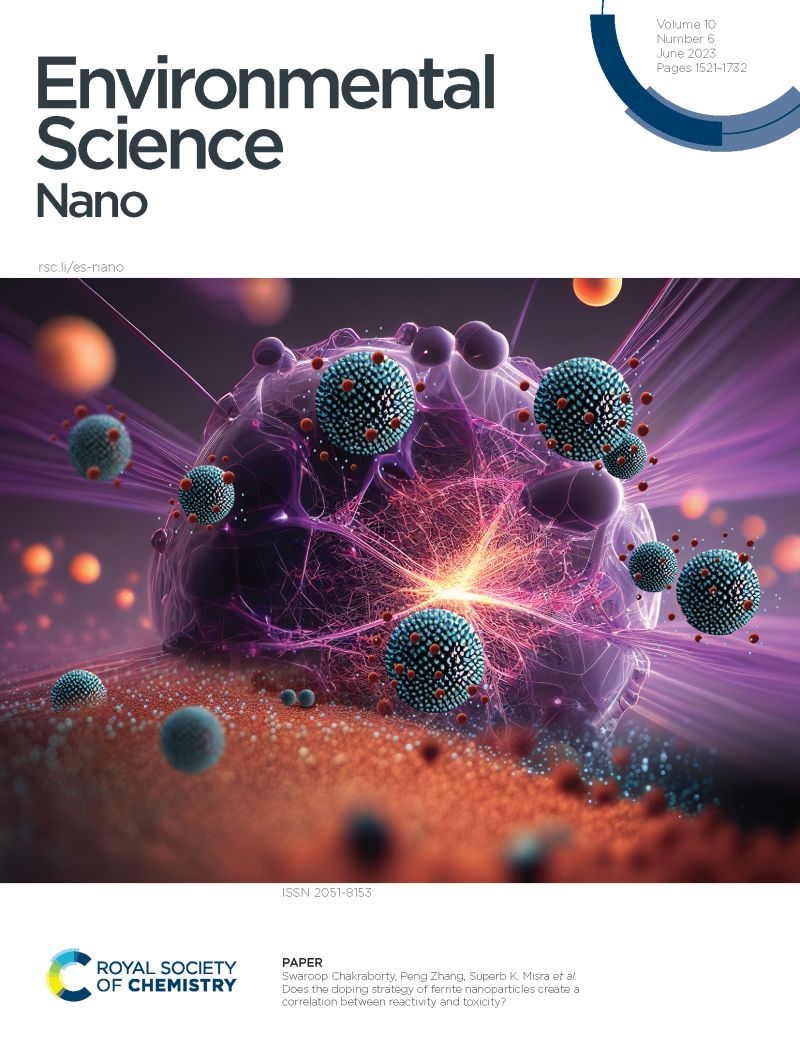Chemical Reactivity of Weathered Nanoplastics and Their Interactions with Heavy Metals
IF 5.8
2区 环境科学与生态学
Q1 CHEMISTRY, MULTIDISCIPLINARY
引用次数: 0
Abstract
There is growing concern about the threat that nanoplastics (NPs) pose to ecosystems. However, a comprehensive risk assessment of NPs is currently constrained by the paucity of knowledge on the chemical reactivity of NPs, which were previously thought to be chemically inert. This review identifies the chemical reactivity of NPs that have undergone abiotic and biotic weathering, including the formation of free radicals, the increase in the content of oxygen-containing functional groups, and the release of plastic leachates. Their interaction with legacy contaminants, such as heavy metals (HMs), is then examined, highlighting their critical role in the oxidation and reduction of HMs, through free radical-mediated redox processes and electron shuttling by carbonyl groups. This review offers new insights into the risk of NPs, where their interaction with legacy contaminants determines the long-term exposure scenario for ecosystems. The unexpectedly large pool of reactive NPs in nature will not only affect their risks but also impact the biogeochemistry of HMs and other contaminants that could react with free radicals and carbonyl groups.风化纳米塑料的化学反应性及其与重金属的相互作用
人们越来越关注纳米塑料(NPs)对生态系统的威胁。然而,目前对 NPs 的全面风险评估受到了有关 NPs 化学反应性的知识匮乏的限制,因为人们以前认为 NPs 是化学惰性的。本综述介绍了经过非生物和生物风化的氮磷的化学反应性,包括自由基的形成、含氧官能团含量的增加以及塑料浸出物的释放。然后研究了自由基与遗留污染物(如重金属)之间的相互作用,通过自由基介导的氧化还原过程和羰基的电子穿梭,强调了自由基在氧化和还原重金属中的关键作用。这篇综述提供了有关 NPs 风险的新见解,NPs 与遗留污染物的相互作用决定了生态系统的长期暴露情况。自然界中出乎意料的大量活性 NPs 不仅会影响其风险,还会影响 HMs 和其他可能与自由基和羰基发生反应的污染物的生物地球化学。
本文章由计算机程序翻译,如有差异,请以英文原文为准。
求助全文
约1分钟内获得全文
求助全文
来源期刊

Environmental Science: Nano
CHEMISTRY, MULTIDISCIPLINARY-ENVIRONMENTAL SCIENCES
CiteScore
12.20
自引率
5.50%
发文量
290
审稿时长
2.1 months
期刊介绍:
Environmental Science: Nano serves as a comprehensive and high-impact peer-reviewed source of information on the design and demonstration of engineered nanomaterials for environment-based applications. It also covers the interactions between engineered, natural, and incidental nanomaterials with biological and environmental systems. This scope includes, but is not limited to, the following topic areas:
Novel nanomaterial-based applications for water, air, soil, food, and energy sustainability
Nanomaterial interactions with biological systems and nanotoxicology
Environmental fate, reactivity, and transformations of nanoscale materials
Nanoscale processes in the environment
Sustainable nanotechnology including rational nanomaterial design, life cycle assessment, risk/benefit analysis
 求助内容:
求助内容: 应助结果提醒方式:
应助结果提醒方式:


